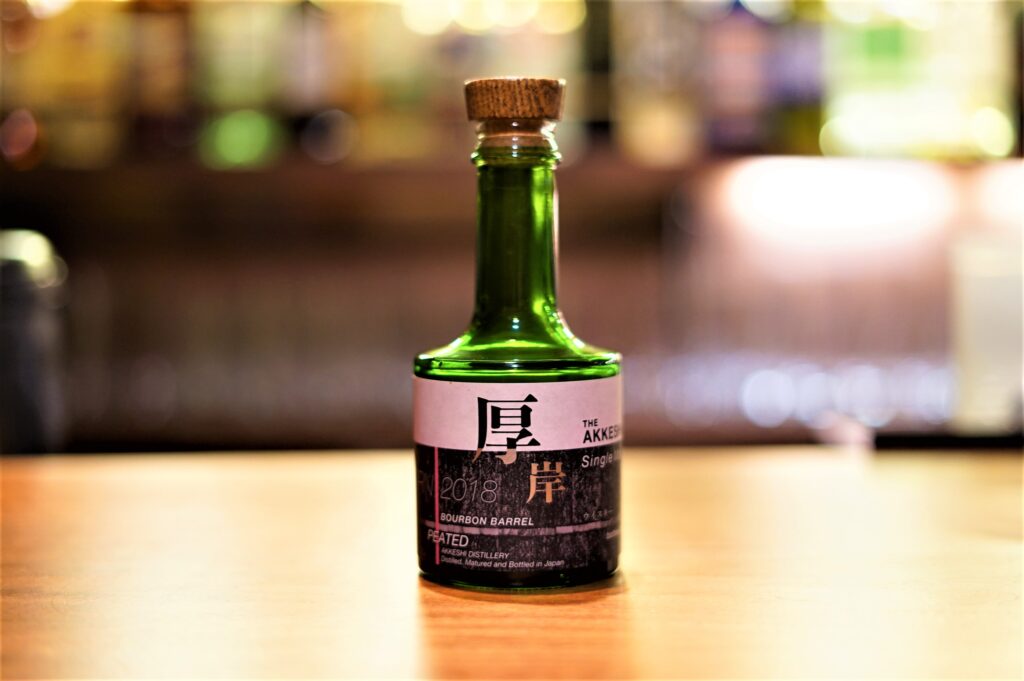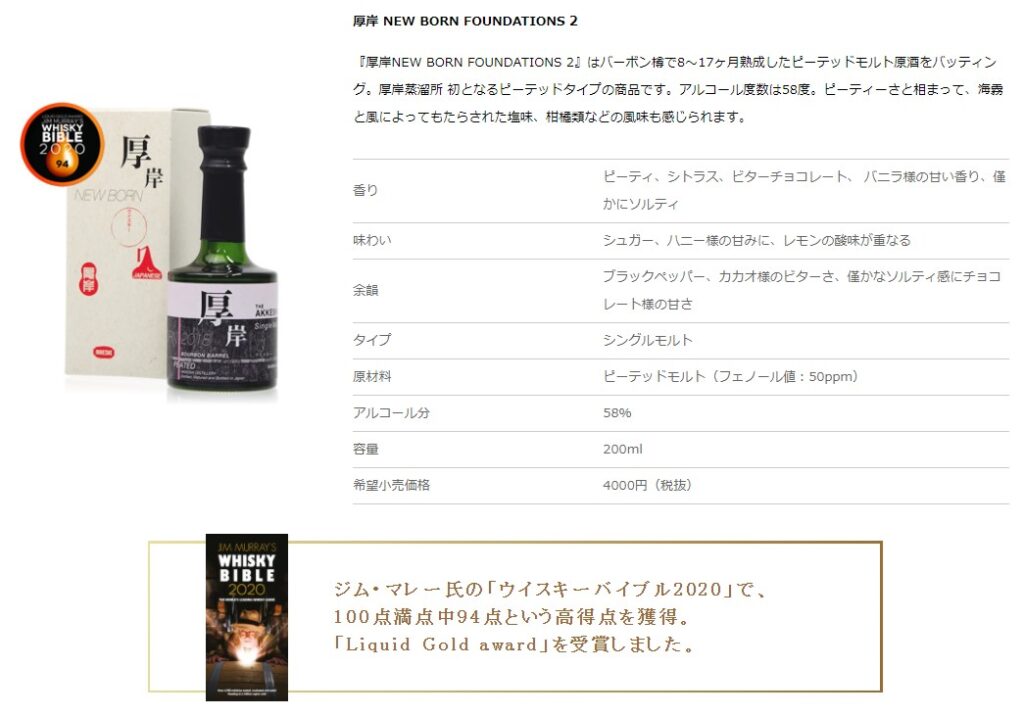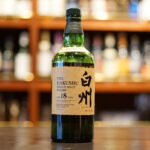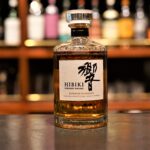The AKKESHI Distillery is highly regarded worldwide, and is becoming more and more famous every day.
This time, I would like to introduce “AKKESHI NEW BORN FOUNDATIONS 2” which was released last August.
Prior to the upcoming official commercialization, the NEW BORN series, which will tell whisky lovers about the “present state of the AKKESHI Distillery,” is scheduled to have a total of four installments, and the first and second installments have already been released in 2018.
The third and fourth series will be released this year, 2019.
- AKKESHI NEW BORN FOUNDATIONS 1 Bourbon Barrel Non-Peat (Released on 2/27/2018)
- AKKESHI NEW BORN FOUNDATIONS 2 Bourbon Barrel Peated (Released on 8/28/2018)
- AKKESHI NEW BORN FOUNDATIONS 3 Quercus serrata (to be released on 3/5/2019)
- AKKESHI NEW BORN FOUNDATIONS 4 Blended (to be released on 8/XX/2019)
The second product introduced this time is “Peated”, which will become the house style of the AKKESHI Distillery in the future.
1. Manufacturer
Kenten Jitsugyo Co.
| Established | 1982 |
| Head office location | Imperial Hotel Tokyo, 1-1-1 Uchisaiwai-cho, Chiyoda-ku, Tokyo 100-0011, Japan |
| Owned distillery | AKKESHI distillery |
2. Distillery
AKKESHI Distillery
| Address | 109-2, Miyazono 4-chome,AKKESHI-cho, AKKESHI-gun, Hokkaido 088-1124, Japan |
| Start of operation | October 2016 |
2015 Start construction of distillery
2016 Distillation started in October.
2017 Completion of the second maturation warehouse
2018 First product release as AKKESHI distillery in February. Third maturation cellar completed.
2020 Release of the first single malt whisky. First release of the 24 Seasons series. Completion of the fourth maturation cellar.
Deep fog with tidal air, clean air, and abundant peat. We began distilling in 2016, believing that the climate of AKKESHI, Hokkaido, would create the unknown flavors of Japanese whisky that we were seeking.
Just like the whisky making process on the island of Islay, we use water that passes through a layer of peat for the brewing water, and the whisky is matured day by day in the cool, humid, and sea breezes of AKKESHI.
The area around AKKESHI is rich in peat, which is essential for flavoring whisky, and the varied topography of the sea, mountains, and marshland means that different flavors can be expected from each location where the peat is collected.
“With a strong desire to produce whisky like Islay malt using traditional Scottish methods, we installed equipment made by Forsythe in Scotland. Forsythe’s craftsmen came to Japan to carry out all the work.
The shape of the pot still is a straight-headed onion shape, similar to that of some distilleries in Islay.
Heating is by a radiator system, the attached condenser is a shell and tube type and the mash tun is a semi-loiter type.
The fermentation tank (washback) is stainless steel, and we dare not adjust the temperature. Letting nature take its course, the craftsman determines the timing of fermentation.
In addition to the two dunnage-type aging rooms, an innovative rack-type aging room was completed in February 2018. The aging room is located right next to the AKKESHI Bay. The aroma of the sea wafting through the air is expected to have a positive impact on the characteristics of the whisky.
In addition to bourbon and sherry, difficult-to-obtain “mizunara” oak is used for maturing barrels. Furthermore, we are challenging all possibilities such as matching with wine and rum barrels.
Lake AKKESHI and Bessanbeigi Marsh are registered wetlands under the Ramsar Convention. The Ramsar Convention is a treaty on wetlands adopted in Ramsar, Iran on February 2, 1971, which aims to conserve and wisely use wetlands as habitats for waterfowl and other wildlife under international cooperation.
We aim to be a distillery that protects and coexists with this rich nature.
The intake for the drinking water used for whisky is the Homakai River upstream of the Ohoro River, which runs near the distillery. The area around the distillery is a marshland and a habitat for the baikamo, which is said to live only in clear streams. The small white flowers that bloom in the summer season are a symbol of the rich water. This water nurtures the whisky of AKKESHI.
Reference: Official website of the AKKESHI Distillery
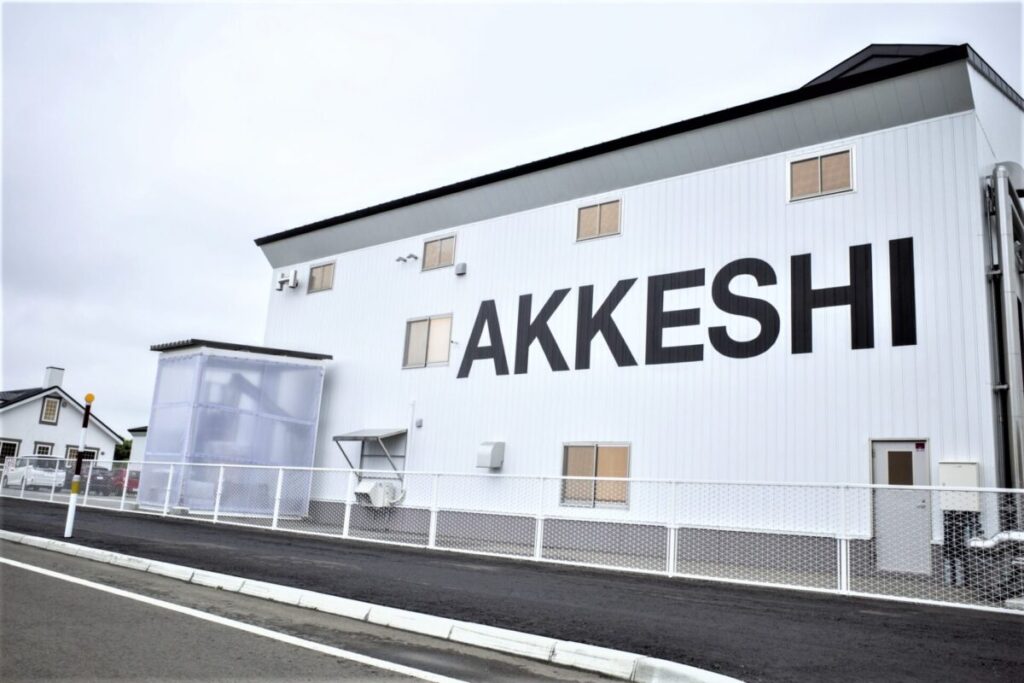

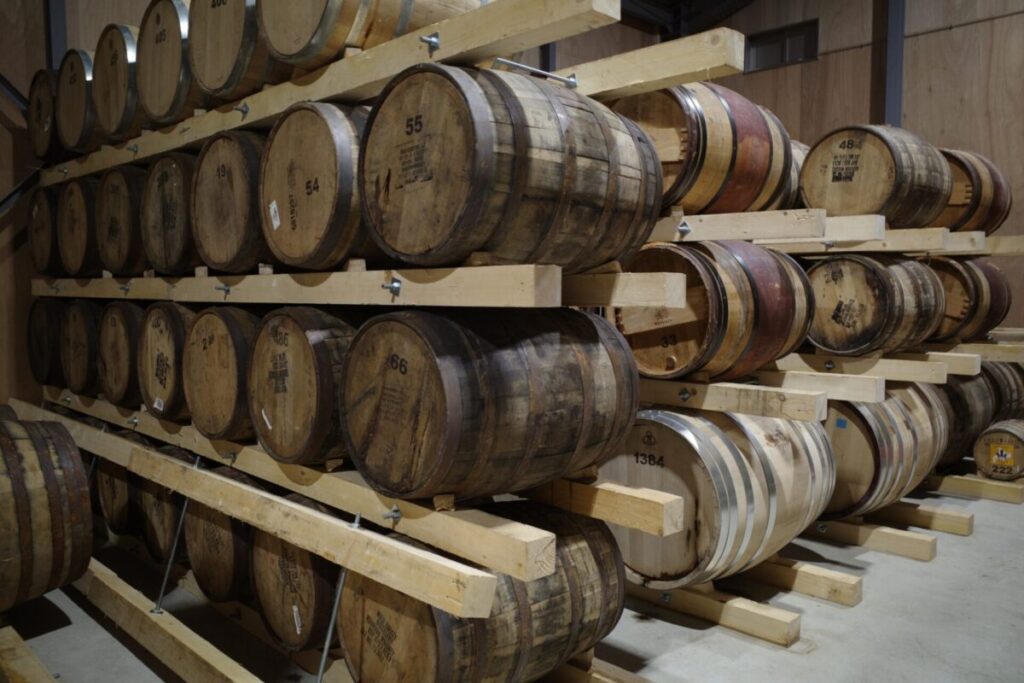
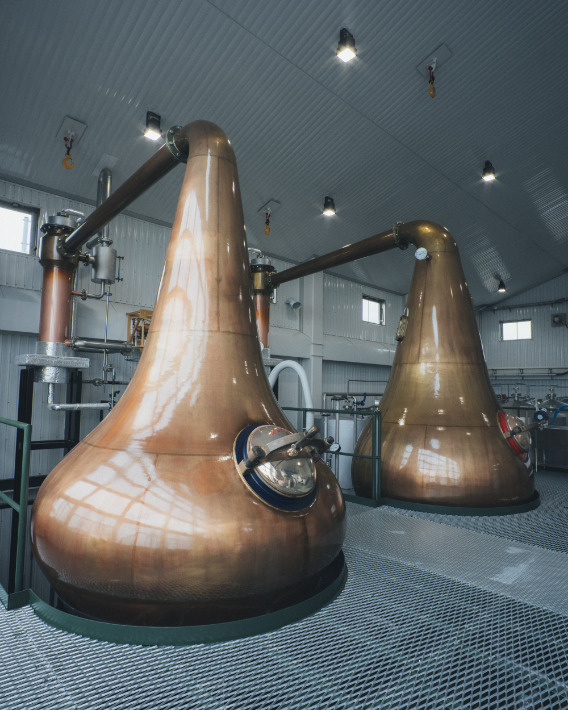
(画像出展:厚岸蒸溜所公式HP|蒸溜所設備と熟成環境)
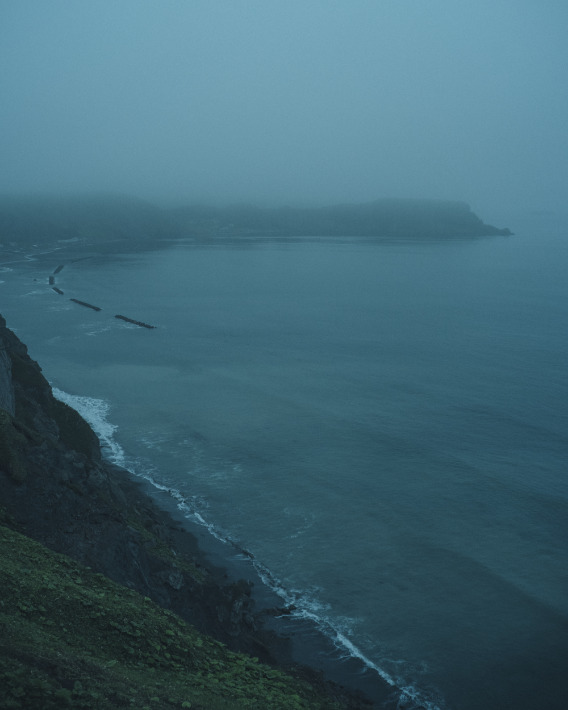
(画像出展:厚岸蒸溜所公式HP|蒸溜所設備と熟成環境)
See also this ↓ for more information on the AKKESHI Distillery.

3. Product name and photo
AKKESHI Newborn Foundation 2
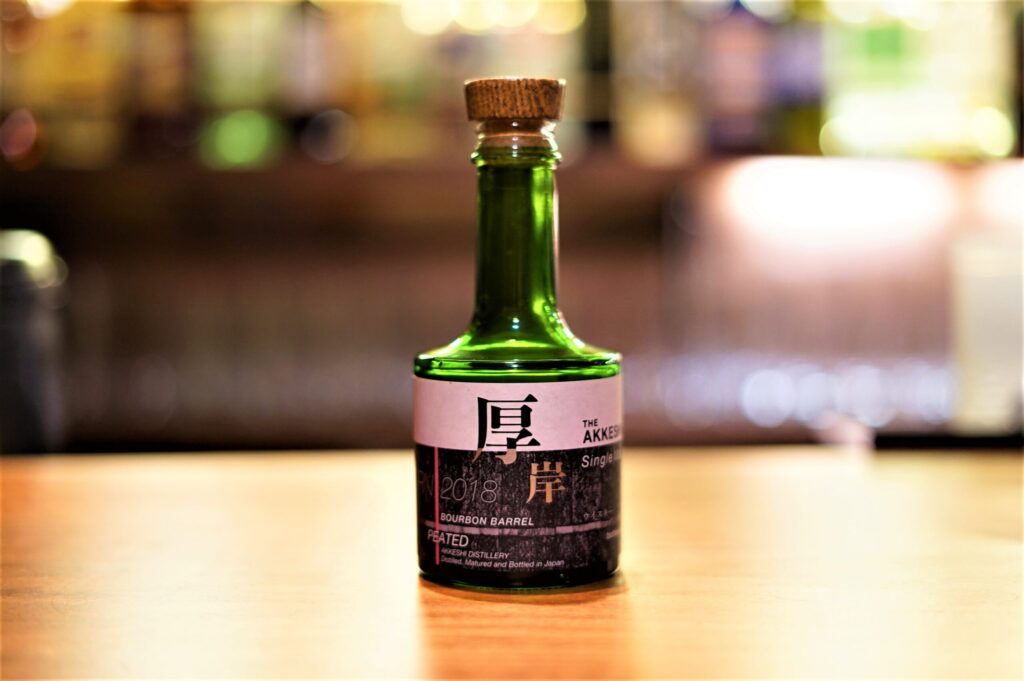
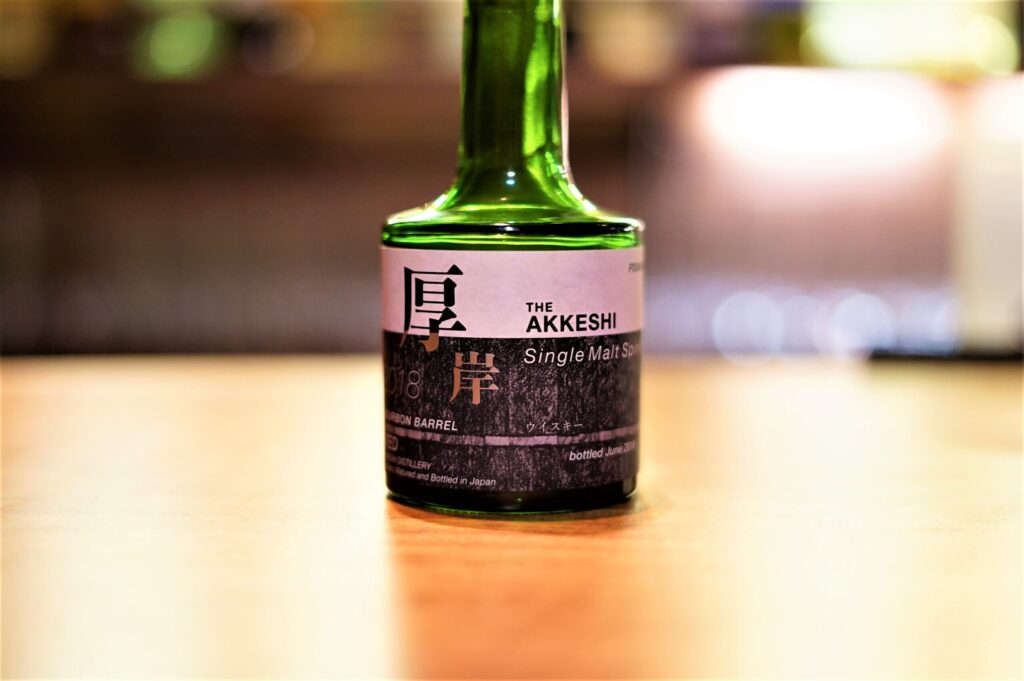
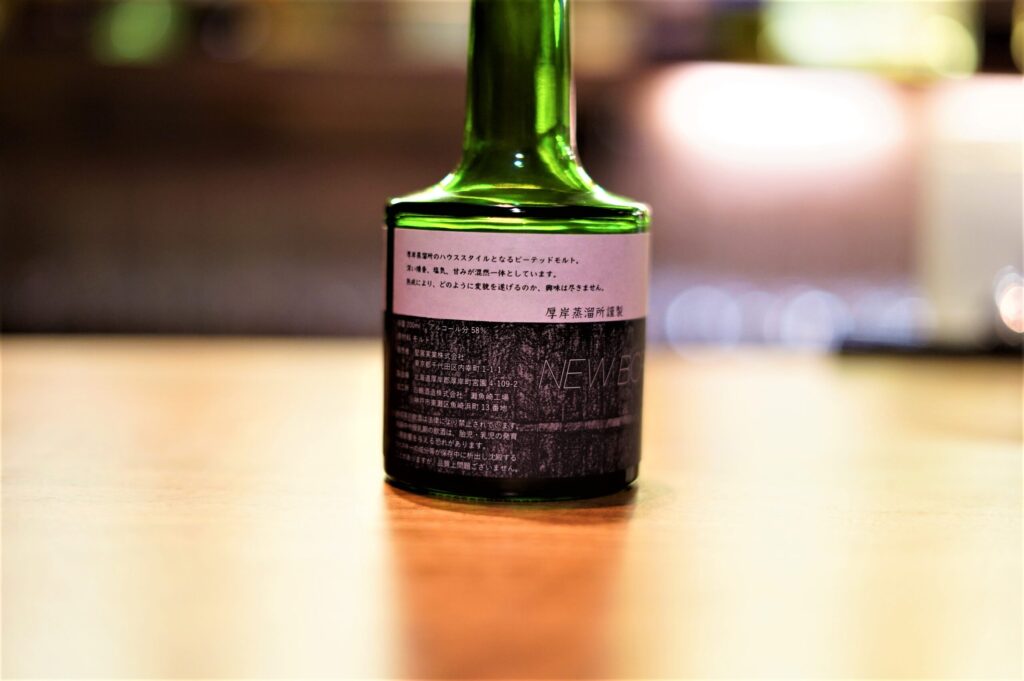
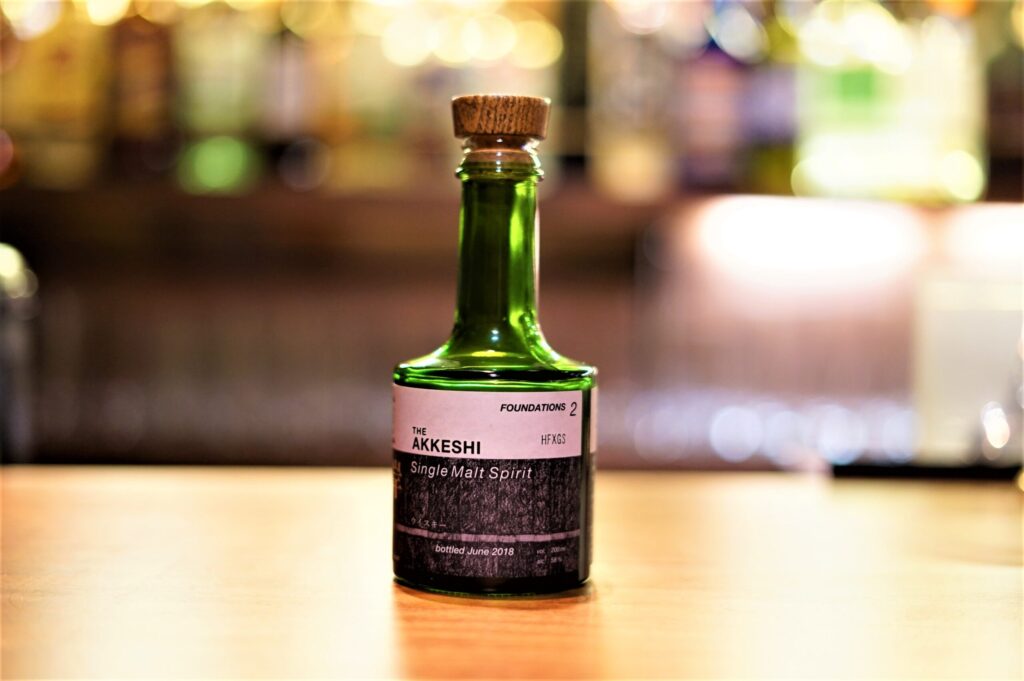
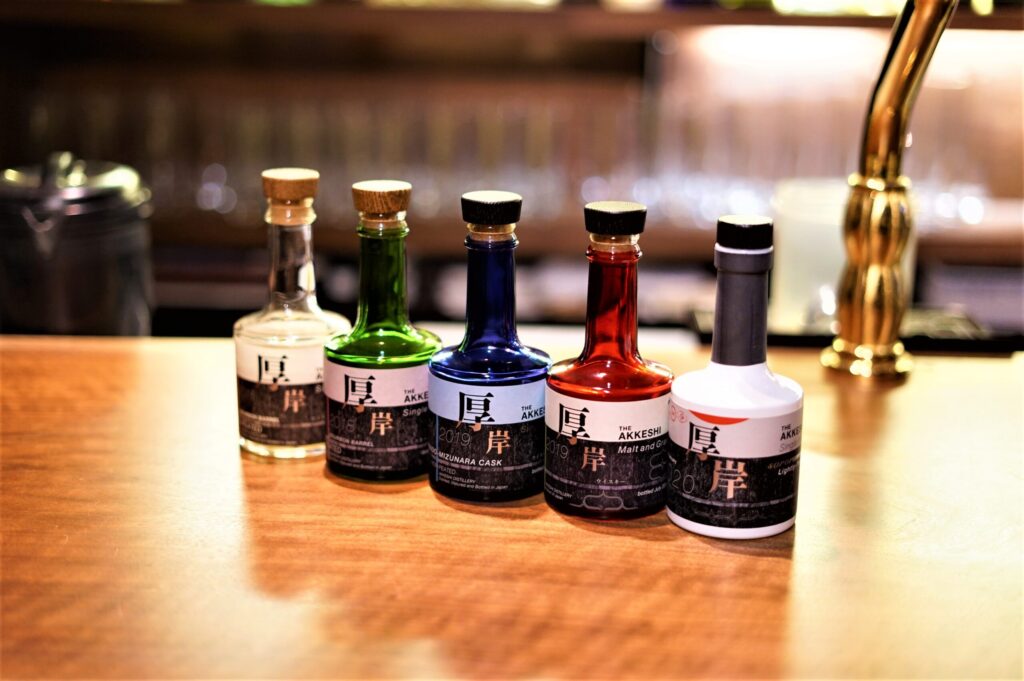
4. Features
Image exhibit: Product Information|Akkeshi Distillery
Bathed only in peated malt barrels aged for 8 to 17 months in bourbon barrels.
Peated malt (phenolic value: 50ppm), batting only the peated malt that is close to cask strength and bottled at 58% alcohol by volume.
President Hida once told a media interviewer that he was so impressed by Ardbeg 17 years that he decided to make whisky.
In other words, the AKKESHI Distillery is aiming for a smoky peated malt, like the Islay malts of Scotland. Smoky peated malt is made by burning peat as a heat source during the malting stage of the whisky making process.
This peat can not be found everywhere, but it is often found in “bogs with low temperatures” such as Scotland, and in fact, Hokkaido’s AKKESHI is said to have a similar climate, which makes it a good source of peat.
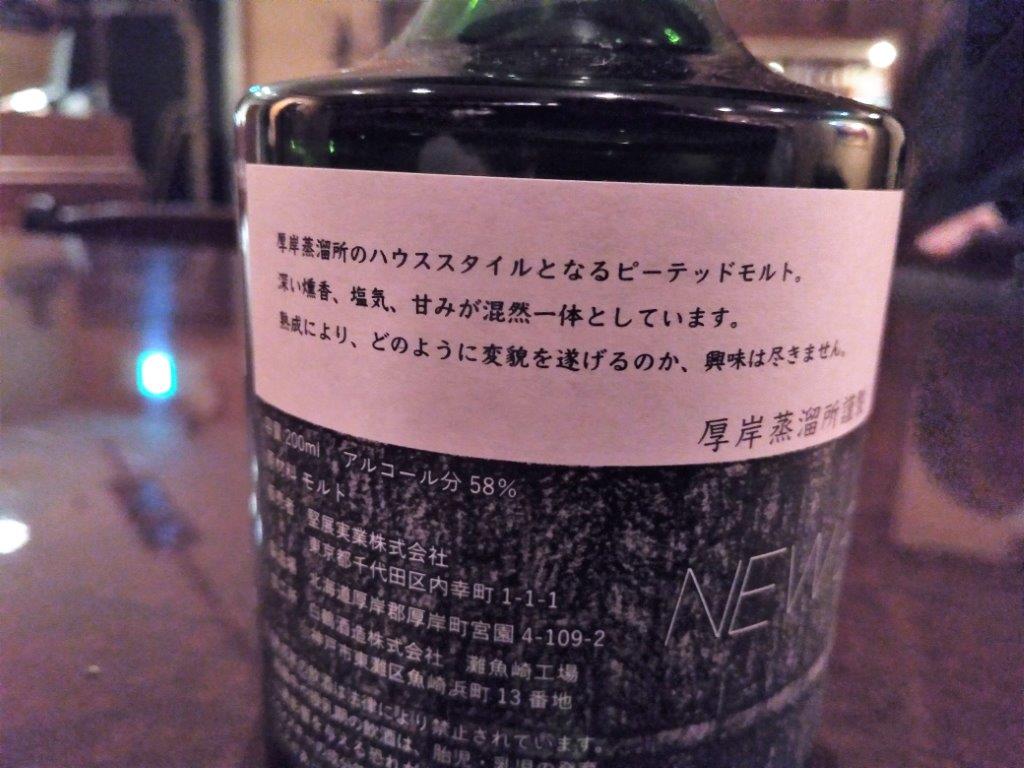
Now, I’ve actually tasted this AKKESHI NEW BORN FOUNDATIONS 2, and here’s what I think.
In the aroma, you can feel the youthfulness of the Newborn maturation, but the high quality comes through the moment you put it on your tongue. It is clear in a good way with no miscellaneous flavors, and you can feel the solid smoke of the hebony peat.
If you let it sit for a while, the aroma will gradually open up. I think there is no other Newborn with such a deep flavor.
The tasting notes on the manufacturer’s website are as follows.
4-1. Tasting Notes
| Aroma | Peachy, citrus, bitter chocolate, sweet vanilla-like aroma, slightly salty |
| Taste | Sugar, honey-like sweetness with lemon acidity. |
| Aftertaste | Black pepper, cocoa-like bitterness, slight saltiness and chocolate-like sweetness. |
4-2. Product Specifications
| Alcohol content | 58% alcohol by volume |
| By liquor | Single Malt |
| Barrel type | Bourbon barrels |
| Contents | 200ml |
| Number of bottles sold | Number of bottles sold |
| Suggested retail price | 4,400 yen (tax included) |
| Release date | August 28, 2018 |
5. Awards
No awards have been received at this time.
6. Price
6-1. Manufacturer’s suggested retail price
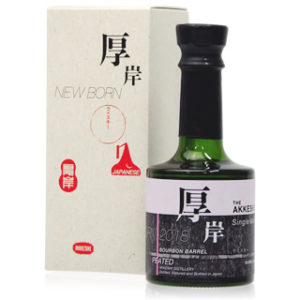

| Product name | AKKESHI Newborn Foundation 2 |
| Capacity | 200ml |
| Suggested retail price | Tax included: 4,400 yen |
6-2. Resale price on Mercari
The resale price on Mercari is Around 8,000 yen to 10,000 yen The resale price on Mercari is as follows. (*As of April16,2021)
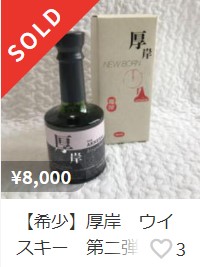
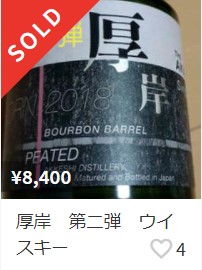
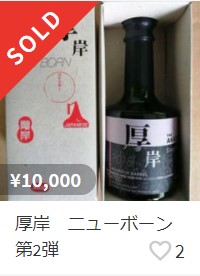
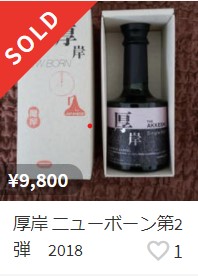
6-3. Yahoo auction bidding price
The current price on Yahoo Auction is Lowest bidder: 6,549 yen, Highest bidder: 10,550 yen, Average bidder: 9,126 yen (*As of April16,2021)

6-4. Rakuten, Yahoo Shopping, Amazon
It is also sold at Around 18,000 yen to 25,000 yen (*as of April16,2021) The current price on Yahoo Auctions is (*as of April16,2021)
6-5. Price offered at BAR Shinkai
At “BAR SHINKAI”, which is operated by this site, we offer 1 cup, 45ml: 4,950 yen 30ml: 3,300 yen, 15ml: 1,650 yen It is also offered in small quantities such as

7. Summary
President Hida said that Akkeshi Distillery is paying the best attention to the quality of raw materials, quality control and hygiene management, and the quality of the original brew is improving day by day.
He also mentioned that in the future, they would like to use peat from Hokkaido to make a house style peated malt whisky.
The Akkeshi Distillery’s Newborn Series, which offers a variety of flavors in different casks, is a dream come true for whisky lovers, and expectations are high for the future.
The third and fourth releases of the New Born series are scheduled to follow, so let’s continue to enjoy them!
8.Related Articles about Akkeshi Distillery
Please check out the other articles about the Akkeshi Distillery.
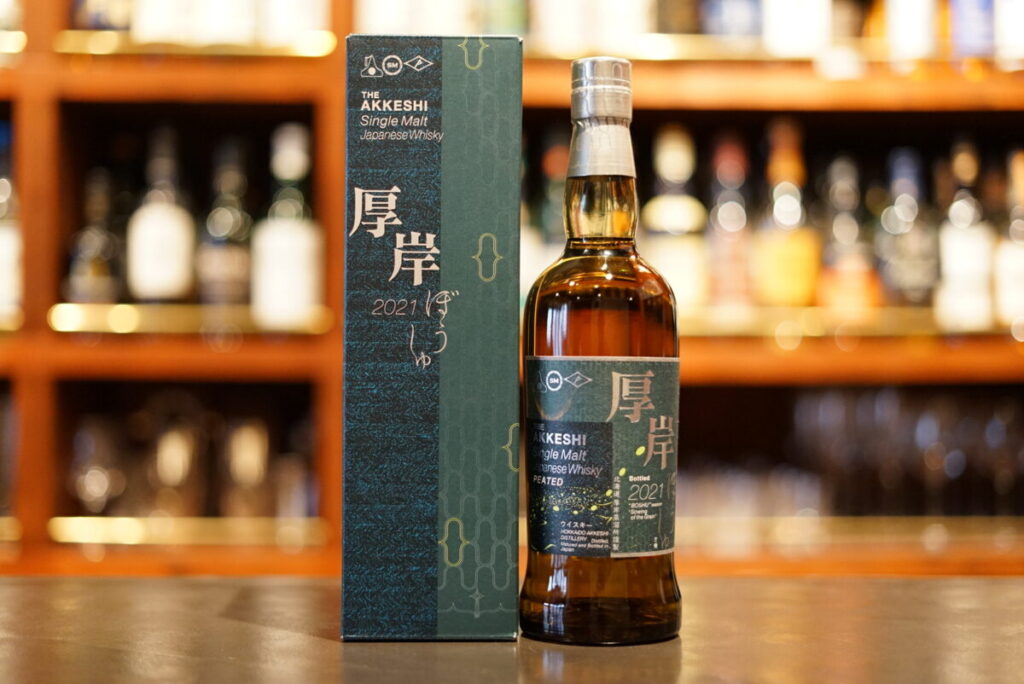
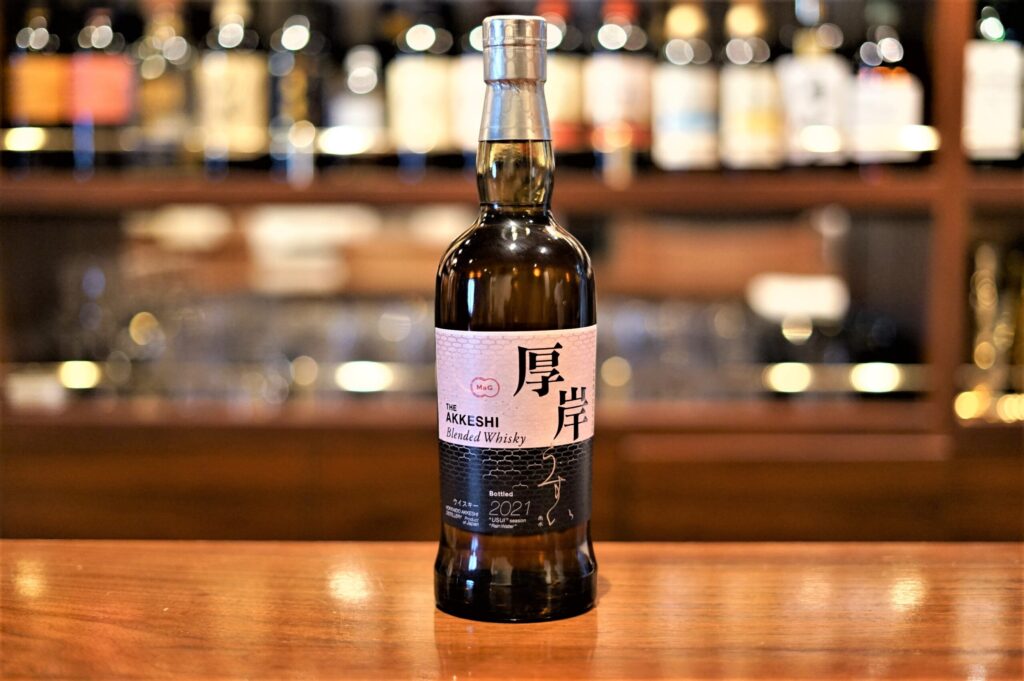
Lastly: Recommended Books on Japanese Whisky
If you want to learn more about Japanese whisky, which is a global trend, we highly recommend these books.
(1).Whisky Galore Vol.29 December 2021 issue
In the December 2021 issue of Whisky Galore, published by the Whisky Culture Research Institute, we report on 11 Japanese craft distilleries, including some that are open to the public for the first time, under the title of “Japanese Whisky Craft Frontline,” the first of three consecutive issues. Why did the popularity of Japanese whisky and the craft boom occur? We will examine with interviews. Chichibu Distillery / Chichibu No.2 Distillery / Mars Shinshu Distillery / Mars Tsunuki Distillery / Kanosuke Distillery / Hioki Distillery / Ontake Distillery / Osuzuyama Distillery / Kaikyo Distillery / Hanyu Distillery / Konosu Distillery
(2). Japanese Whisky as an Education for Business
This is a book written by Mamoru Tsuchiya, a world-famous whisky critic and representative of the Whisky Culture Research Institute, titled “Japanese Whisky as a Culture that Works for Business” .
The book covers the basics of whisky, the introduction of whisky to Japan, the birth of Japanese whisky, advertising strategies and the rise of Japanese whisky, and the current rise of craft distilleries. This is a book that summarizes Japanese whisky in a very easy to understand way.
(3). Whisky and I (Masataka Taketsuru)
Masataka Taketsuru, the founder of Nikka Whisky, devoted his life to brewing whisky in Japan. This is a revised and reprinted version of the autobiography of a man who simply loved whisky and talked about himself. The book vividly depicts the days when he went to Scotland alone to study as a young man and overcame many hardships to complete Japanese whisky, as well as his companion, Rita.
(4). A Letter of Challenge from a New Generation Distillery
Launching in 2019. With the world experiencing an unprecedented whisky boom, what were the managers of craft distilleries thinking and what were their thoughts as they took on the challenge of making whisky? This book tells the stories of 13 craft distillery owners, including Ichiro Hido of Venture Whisky, famous for his Ichirose Malt, who inspired the birth of craft distilleries in Japan.
(5). Whiskey Rising
This is the Japanese version of Whisky Risng, published in the US in 2016, with much updated content. Not only does it describe the history of Japanese whisky in detail, but it also includes data on all the distilleries in Japan, including the craft distilleries that have been founded in recent years. The book also includes descriptions of the legendary bottles that have been released, as well as information on bars where Japanese whisky can be found.

